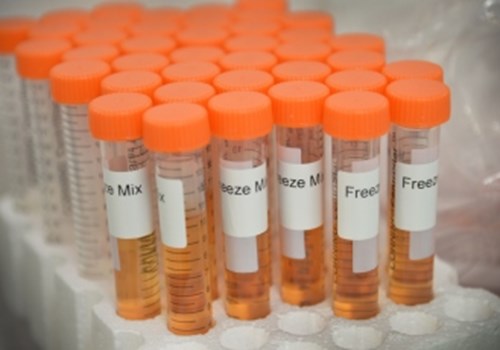Making cell lines more physiologically relevant for toxicology testing: how sugar may not help the medicine go down

Thanks to their accessibility, ease of use and suitability for high throughput analysis, cancer derived human cell lines are useful laboratory tools for the screening of the effectiveness and toxicology of potential new drugs.
For these models to be truly effective it is important that they reproduce the metabolism found in the human body, including the function of mitochondria. In normal cells mitochondria perform two important functions: they produce over 90% of the energy required by the cell and also play a critical role in cell survival as a component of the mechanism of apoptosis (programmed cell death). Drugs that display unwanted toxicological effects on mitochondrial function could have a major impact on patient health. Each year a significant percentage of drugs have to be withdrawn from the market, or their use curtailed due to adverse effects that were not found during preclinical and clinical testing1.
Whilst researching the biology of cancer cell lines in the 1920s the pioneering German scientist Otto Warburg discovered that cancer cells have high metabolic requirements and generate their energy differently from normal cells. Cancer cells consume high levels of glucose and excrete large amounts of lactate showing that the cells preferentially generate their energy through the process of glycolysis in the cytosol (fermentation), rather than mitochondrial oxidative phosphorylation2.
It is now widely accepted that the Warburg effect is not just a phenomenon observed in cancer cells, but in most proliferating mammalian cells; it is found in wound healing and observed in most conventional cell culture, in both cancer and non-cancer derived cell lines3. This feature of proliferating cells is further complicated by another phenomenon known as the Crabtree effect (named after the English biochemist Herbert Grace Crabtree). The Crabtree effect is similar to the Warburg effect but is shorter term and reversible and can be induced by exposure of cells to media containing high concentrations of glucose4.
The aberrant metabolisms of cell cultures displaying the Warburg and Crabtree effects therefore present a potential problem for the use of conventional culture in drug toxicity screening, as mitochondrial toxicity may go unnoticed, allowing potentially harmful drugs to proceed to clinical trials.
In 2011 Marroquin and co-workers showed that a more physiological mitochondrial metabolism could be restored in the liver cancer derived cell line HepG2 a cell line widely used in the toxicological field. This was carried out by the relatively simple method of replacing glucose with galactose in their cell cultures. By forcing the cells to rely on mitochondrial oxidative phosphorylation rather than glycolysis, they became more susceptible to mitochondrial toxicants5. This approach has been further employed in the study of primary muscle cell cultures obtained from normal and diabetic patients and has helped further the understanding of mitochondrial dysfunction in the disease6. More recently mitochondrial function has been restored in the continuous mouse muscle myoblast cell line C2C12 by cultivating the cells in low glucose concentrations7.
These studies highlight the weakness of conventional cell cultures in detecting mitochondrial toxicity but also demonstrate the reversible nature of the Crabtree and Warburg effects in cell culture systems and how manipulation the concentration and nature of sugars in cell culture media to more physiological levels can restore mitochondrial oxidative phosphorylation, potentially rendering cell cultures more physiologically relevant for toxicological testing.
References
1. Dykens, J. A. & Will, Y. The significance of mitochondrial toxicity testing in drug development. Drug Discov. Today12, 777–785 (2007).
2. Potter, M., Newport, E. & Morten, K. J. The Warburg effect: 80 years on. Biochem. Soc. Trans.44, 1499–1505 (2016).
3. Vander Heiden, M. G., Cantley, L. C. & Thompson, C. B. Understanding the Warburg Effect: The Metabolic Requirements of Cell Proliferation. Science324, 1029–1033 (2009).
4. Diaz-Ruiz, R., Rigoulet, M. & Devin, A. The Warburg and Crabtree effects: On the origin of cancer cell energy metabolism and of yeast glucose repression. Biochim. Biophys. Acta BBA - Bioenerg.1807, 568–576 (2011).
5. Marroquin, L. D., Hynes, J., Dykens, J. A., Jamieson, J. D. & Will, Y. Circumventing the Crabtree Effect: Replacing Media Glucose with Galactose Increases Susceptibility of HepG2 Cells to Mitochondrial Toxicants. Toxicol. Sci.97, 539–547 (2007).
6. Aguer, C. et al. Galactose Enhances Oxidative Metabolism and Reveals Mitochondrial Dysfunction in Human Primary Muscle Cells. PLOS ONE6, e28536 (2011).
7. Elkalaf, M., Anděl, M. & Trnka, J. Low Glucose but Not Galactose Enhances Oxidative Mitochondrial Metabolism in C2C12 Myoblasts and Myotubes. PLOS ONE8, e70772 (2013).
